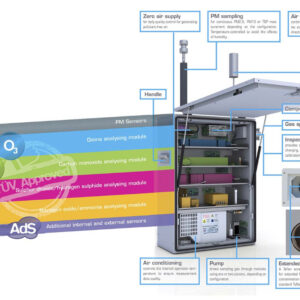Description
Fresh water – one of the world‘s most valuable resources
Of the nearly 1.4 billion km³ of water covering the earth, fresh water represents merely 2.6% or 36 million km³. About one third of this amount circulates reasonably quickly and is thus referred to as hydrological cycle.
This may sound like a huge quantity but compared to the 146 million m³ of water consumed annually by, for example, the population of a metropolis like the Austrian capital Vienna, and assuming a 100 m³ per capita consumption, this seemingly large amount is virtually insigni cant. The per capita consumption is nearly twice as high in the United States and Canada.
While private households consume only 10%, agriculture is responsible for the bulk of almost two thirds of the global fresh water consumption and industry accounts for the remainder. Both of the latter sectors show a clear increase in consumption. Based on this data we can easily extrapolate that we will consume the entire circulating rainwater and thus no longer feed the natural aquifer storage system.
Equally distributed access to fresh water, which is important for health, should have top priority for decision-makers
From today‘s perceptive one could say that the effects of global warming will worsen this situation even further. According to developed scenarios, there will be not only more droughts but the urgently needed precipitation will increasingly be in the form of torrential rains and flooding thus making supplying high-quality drinking water dif cult despite a momentarily more than abundant precipitation.The following countermeasures seem to be sensible:
- Improve the water system ef ciency, e.g. by reducing leaks and reducing per capita consumptionImprove the water system effectiveness, e.g. by selecting water quality with the help of user criteria
- Set up suf cient drinking water supplies even in areas without suf cient precipitation, and without emissions adding to the
greenhouse effect - Treat fresh water resources with utmost caution and continuously monitor its quality
The European Union has a number of rules and regulations securing good water quality including in particular the Water Framework Directive and more recently, what is known as daughter directives.




Reviews
There are no reviews yet.